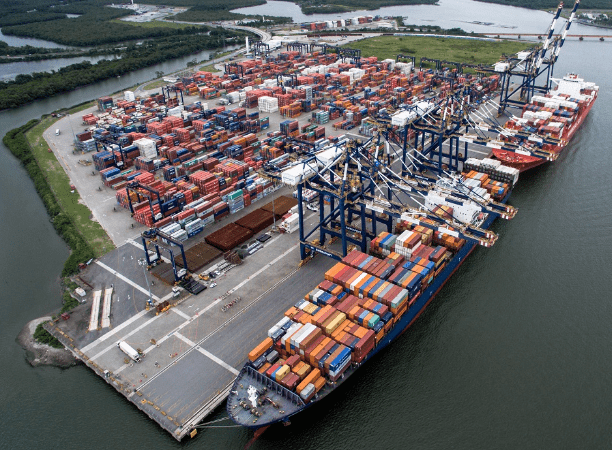The Brazilian government temporarily gave up on putting up a bid for the new mega terminal at the Port of Santos, which promises to expand its container handling capacity by up to 40%.
Depending on the outcome of the upcoming presidential elections, the new terminal – also known as STS10 – will only be put up for bid after the privatisation of the Santos Port Authority (SPA), a process whose preliminary documents the Federal Court of Accounts should review with further scrutiny this week.
To give a dimension of what it means to implement the STS10 “mega terminal,” the Brazilian government has been currently referring to the bidding of STS08 and STS08A, two fuel terminals, as the “largest in history.” The two terminals will be auctioned in November.
Technical studies carried out by Brazil’s Planning and Logistics Company (EPL in Portuguese), which will have to be updated, in addition to competition issues.
The STS10 would replace three smaller terminals that presently handle vehicles and non-unitised loads, such as wind turbines and electric transformers. There is still no word on how or where these cargoes will be relocated once the containers arrive.
Given these factors, the government decided that the studies need to be updated, which brings the bidding process back to a stage in which the port privatisation is more advanced.
The outcome will also greatly depend on the electoral process. If President Jair Bolsonaro is re-elected, privatisation is expected to be completed in the first half of 2023, with new private partners in the port of Santos tendering the “mega terminal.” If former president Luiz Inácio Lula da Silva returns to the Presidency, the tendency is for port officials to stick to the original plan. Workers Party’s advisors have already announced that Lula does not intend to private the port, a scenario in which the “mega container terminal” would be auctioned by the government, as it would have been in case the tender happened this year.
The Ministry of Infrastructure wanted to auction the terminal before privatising the port, but the second option turned out to be more feasible.
The new terminal was designed to reconfigure the port and promote competition. It has the potential to attract around $1.9BN in grants. Even if the lease takes place after privatisation, the government would have to “boost” the granting of the port auction to compensate for the loss of the asset.
The STS10 will have a capacity like the terminals of Brasil Terminal Portuário (BTP) and Santos Brasil. As per the current tender rules, BTP cannot participate in the event. However, the company’s partners – APM Terminals, controlled by Maersk, and TIL, controlled by MSC – would be able to participate separately.
